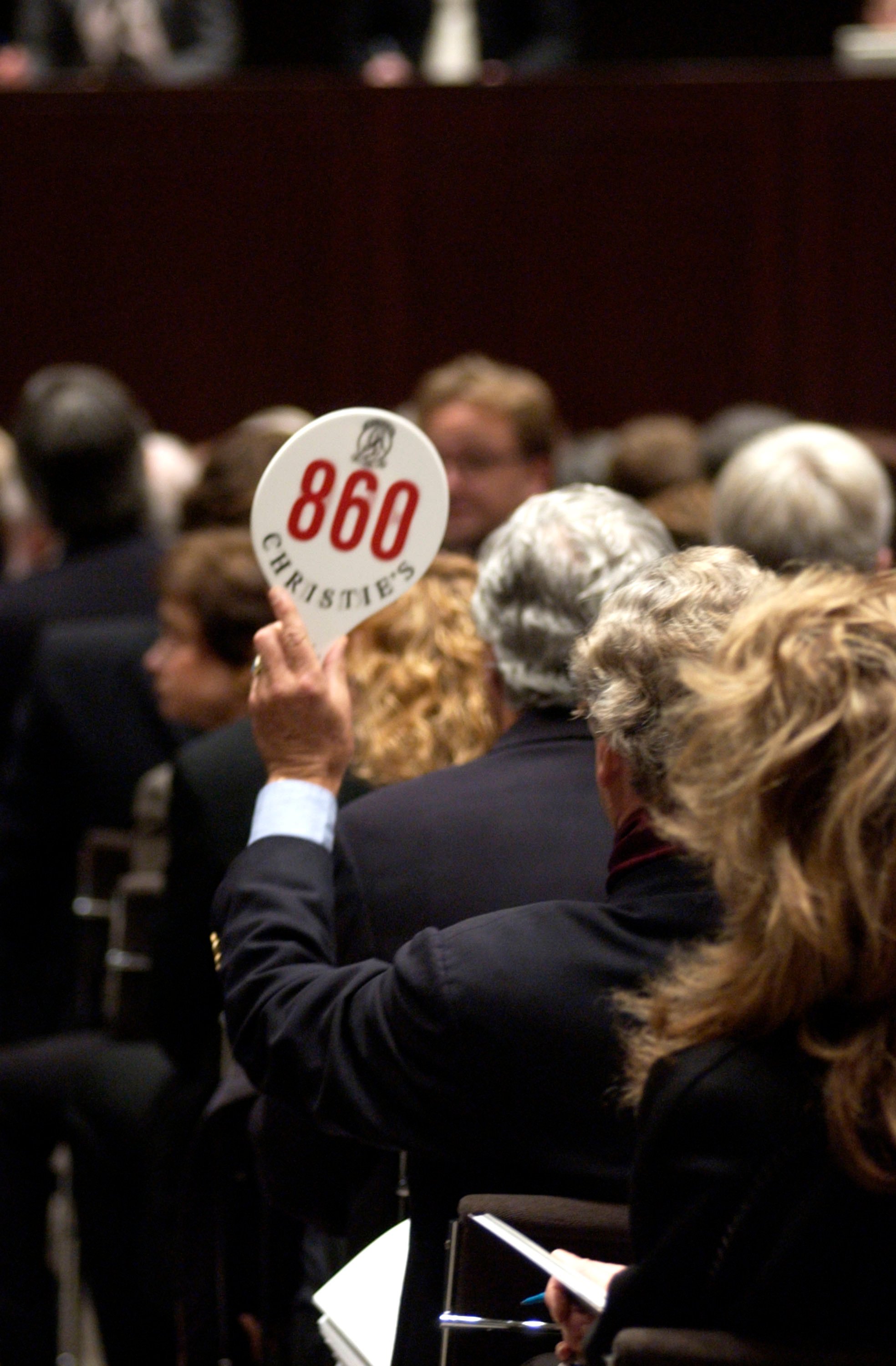
It’s been a record-breaking six months for Christie’s. Sales were up across the board for the auction house, which reported first-half results for 2018 today. Overall, sales spiked 26 percent to “almost £3 billion,” or $4 billion, compared to £2.35 billion ($3.1 billion) in the first half of 2017.
The clearest boost to the bottom line came from the historic Rockefeller collection, a marathon series of auctions that pulled in $835 million in revenue. That whopping total came on top of the regular spring cash cow sales of Impressionist, Modern, and contemporary art in New York in May.
Other factors that helped fuel the boom, according to Christie’s, included “continued global demand and audience engagement with the diversity of collecting categories.” Auction sales were up 20 percent—to £2.65 billion ($3.6 billion)—while private sales rose a significant 135 percent, to £287 million ($390.3 million).
The increase in private sale volume is a significant turnaround from the comparable report last year. In 2017, Christie’s reported a 66.5 percent decline in private sales at $155.4 million (£122.2 million).
Online-only auction sales—sometimes taken as an indicator of the overall health of internet bidding and buying—also rose for the first half of 2018, by 40 percent, to £27.7 million ($37.7 million). Last year, Christie’s described the same category as “stable” with revenue of £19.8 million or $26 million. Online sales attract the largest number of new buyers, according to the report.
At the high end of the market, Christie’s said 55 lots sold for more than $10 million each.
“Rockefeller was obviously very significant for us and it amplified the season,” said Jen Zatorski, Christie’s newly appointed president of the Americas. “But it wasn’t the season. A lot of the clients that were engaged in Rockefeller actually transferred to other auctions and really enabled us to have this transaction value and the statistics that you see.”
The Rockefeller collection sale accounted for numerous $10 million-plus lots and was both the highest total ever achieved for a private collection at auction and the most significant charitable auction ever. One hundred percent of the lots sold (which was not unexpected, as the collection also carried a financial guarantee).
The top lots in the Rockefeller collection were also some of the spring season’s headline-grabbers, even if they sold closer to expectations.
One such lot was Picasso’s Fillette à la corbeille fleurie (1905), which sold for $115 million compared a with presale estimate “in the region of $90 million.” Inasmuch as a nine-figure price for a painting could be seen as disappointing, bidding on the work, which depicted a young nude girl, was relatively subdued. It hammered down for $102 million. There was more enthusiasm—and also new auction records—set for Claude Monet ($84.7 million) and Henri Matisse ($80.1 million).
In addition to the Rockefeller sales, the spring auctions also yielded strong results, with the Impressionist, Modern, postwar, and contemporary series realizing $961 million, more than 14 percent above the previous May results. (As always, a caveat applies here: The figures above are those publicly reported by the house, and do not always reflect any arrangements the house has with sellers or third-party guarantors.)
Looking ahead, Christie’s said collection and consignment activity remains “particularly strong” for the second half of the year. The collection of renowned philanthropist and connoisseur Eugene V. Thaw, who was also an advisor to David Rockefeller, will be offered in a dedicated sale on October 30.
As usual, art market observers are paying close attention to demand from Asian buyers, as the ranks of newly wealthy collectors can often serve as a mini-barometer of market growth. Asian buyers accounted for 15 percent of the Rockefeller total by value. Zatorski said Christie’s is encouraged by numbers showing that 60 percent of Asian buyers are purchasing objects that fall outside the Asian art categories, indicating broadening tastes.